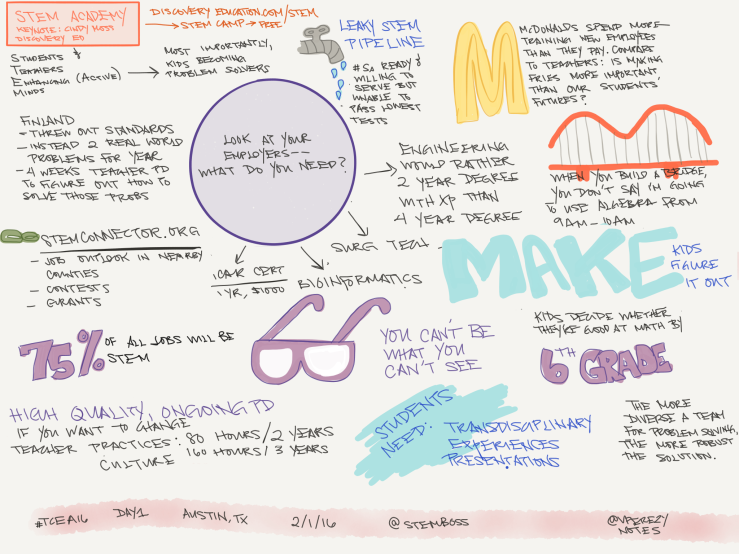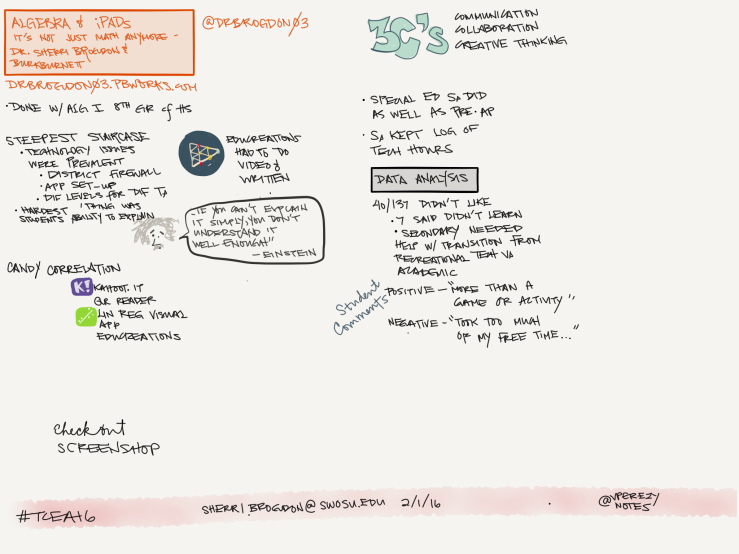A hashtag is a peculiar thing in that it is defined by the ways it’s used. No one person can claim it because anyone on social media can assign a hashtag to a post. Yet people can be denied full access to a hashtag. For example, (1) when users using web-readers encounter hashtags wherein words are mispronounced due to lack of capitalization or (2) when a user is blocked by a 2nd user, the 2nd user’s tweets will not populate in the hashtag search for the 1st user. I’d further venture to say the meaning of a hashtag can change depending on the platform in play (Twitter vs. Facebook vs. Instagram).
So #OklaEd is mutable (It’s a pun, guys! Too soon?) by nature. Three years ago, I blogged about what #OklaEd meant to me (link) but last night’s edchat compels me to revisit the question.
But, first, a caveat: This post is my hot take. I don’t speak for anyone else or any organization.
#OklaEd, the Twitter hashtag: As stated above, the hashtag can’t be controlled. Even if @OklaEd, “the official Twitter account” describes it as “the hashtag that brings OK educators together. #OklaEd is not political & promotes constructive dialogue”, there’s no way to enforce the mandate. It can be the mission of the edchat, but not the hashtag. The hashtag is simply the collection of posts using the signifier with no reference to relevance (hello, spam). As a user, it’s a tool that I can use with varying degrees of skill (such as refining filters or to reach a wider audience) for various purposes, but I don’t get to tell someone else how they can use it.
#OklaEd, the edchat: every Sunday at 8 pm Central, except Christmas. Every fifth Sunday is the legislative update, moderated by @shawnhime, Executive Director of the Oklahoma State School Boards Association. The chat is organized by @mrsbeck25 and @coach57. To the best of my knowledge, organization means they manage the calendar for the other Sundays. Until this school year, anyone could ask to moderate a Sunday chat with the topic of their choosing. Now, after community feedback, only educators or someone partnered with an educator is able to moderate.
So what’s a moderator do? You come up with enough questions for the hour, usually 7-10. Sometimes you make the pretty graphics but hopefully you type out the questions, too, because ACCESSIBILITY. Most importantly, you keep the conversation going by adapting questions with the flow, retweeting other participants to amplify or ask for clarity.
Yesterday an issue arose where many Oklahoma educators had previously been blocked by one of the moderators @angmlittle. This was a problem because (1) the blocked users wouldn’t be able to fully participate in the chat and (2) the moderator can’t fulfill their role if they can’t see all the responses. I thought the simplest way to patch the problem would be to re-type the questions and post them again to the hashtag so they’d be visible (a retweet would not be visible) as well as screenshot or re-type the responses of the blocked users. After the chat, I thought we’d be able discuss the issue of blocking with input from the chat. I was clearly wrong.
One topic the chat discussed was the effectiveness of working within the system versus working outside of it. I pointed out “Working within the system isn’t a possibility for everyone, especially if the system was designed to keep you out” (link). How ironic that the system of this particular chat was designed to keep particular people out. (Point: the moderator did eventually unblock everyone. Update: @The_Whistle says this is incorrect and not everyone was unblocked.)
My personal thoughts are that while you can’t take away someone’s right to block (and I use that right), it’s a reasonable expectation (from now on) for someone who is voluntarily moderating the #OklaEd chat to unblock everyone for the duration of that particular chat.
But guess what? I’m not in charge so that may or may not happen. Maybe others will agree, maybe not. I can only control myself. My reasons to stay are my own and, yes, they do include that I am one of the few participants of color. If I decide not to participate in the #OklaEd chat, that’s fine. World keep on spinning, hashtag keep on hashing.
Has the chat changed in the years I’ve participated? Yes. That’s what happens in any organization over time (I’m reminded of #MTBoS), never mind the sea change of last year’s walkout.
I think one of the main problems in #OklaEd is the sense that you can’t believe in the worthiness or positive potential of an idea/organization/cause/thing and criticize it at the same time. Surprise! You can. I’ve talked about how #OklaEd has been a positive force in my life, and yet I’ve had to peace out for a spell or two.
Sometimes I think the chats are too shallow, too repetitive, too unwilling to address anti-racism and LGBTQA. I think the people who complain that chats are “too political” or that “being kind” is a panacea…you get the picture. Anyway, please don’t suffer from the illusion that I have glorified #OklaEd. There’s definitely some work to do, but that’s not something I can stuff down people’s throats. What I can and have done is found other spaces, other edchats and communities to join. I may circle back around later because Oklahoma is my home, but it’s also okay if I never participate in #OklaEd chat again; I’ll still be part of #OklaEd.
Another issue of contention was who is the #OklaEd chat for and who gets to participate? Who gets to dictate this? My response is “Who’s going to enforce it?” No one because that’s not how Twitter works. If you’re after a closed discussion, Twitter is simply not the venue for it. Take it to DMs, a private Facebook group, or some other backchannel if that’s what you’re after. There’s no reason to discuss the earlier questions; the point is moot.
Now let’s say you aren’t interested in a particular #OklaEd edchat topic? Scroll on by like the grown person you are. If you’re not interested in any of the topics, the move is to moderate the chat you want want to see (The @s are posted above) or scroll on by.
I will say, however, that public education is a public issue. Why would you try to limit the discussion to educators? How can you reason the exclusion of students and parents? Nihil de nobis, sine nobis; nothing about us without us. I’ve seen lots of discussion on why elected officials have been invited into the edchat, but how are you gonna exclude your neighbors? Who decided we can include educators from other countries and continents in the chat, but not the people who live here? I get the narrative where educators don’t want policy made by people who don’t understand education, but this isn’t lawmaking, it’s an open forum. If you, an individual, don’t want to listen to another individual, that’s okay, but First Amendment says you can’t stop them from talking.
Now First Amendment doesn’t do anything to stop a person from showing their a** on Twitter either…Who’s job is it to police that during an edchat? I’d say the moderator in the chat. I digress.
I support anyone’s decision to leave the #OklaEd edchat or stop using the hashtag (not like you need permission). It’s not like they stop existing with that decision. #OklaEd is many things and it’s not like it will disappear because of any one person.
#OklaEd, the community: is made up of people, the community extends beyond a hashtag (on any platform). The hashtag helps find resources and people, but without the people it’s useless as a 404 error. The hashtag is a tool; the people are who matter. I think there’s a danger in nostalgia, in romanticizing the early days of #OklaEd, the golden time when we all loved each other and only talked about “teaching”. That never happened. We’ve always had tension, differences, and conflicting agendas because the #OklaEd community is made up of people. We were never a monolith, we’ve always been dynamic. We always will be. There are people who just discovered #OklaEd through the rise of advocacy last year and there are people who are part of #OklaEd and don’t know it. It doesn’t make them worth less. I believe in #OklaEd, I believe that Oklahoma educators want our students to become thriving (beautifully complicated) adults.
And yet…
“We all have to unite” sets off my defenses. The tone policing masquerading as righteousness* turned me away as much as the clout chasing. I have no interest in participating in a system where you can’t speak truth to power. This is a crap dismount to a long and winding blog post, but that’s all I’ve got. I’ve got no wisdom, no resolution, no answers. Next week’s chat is “What’s Next for #OklaEd?” and I can’t even predict how that’ll go or if I’ll be there. As Brene Brown would say, my armor is on. I’m not sure how effective I can be with it between us.
*Please consider the NPR’s podcast “Code Switch” episode on “Respect Yourself: What does ‘civility’ look like and who gets to define it? What about ‘respectable’ behavior? This week, we’re looking at how behavior gets policed in public.”
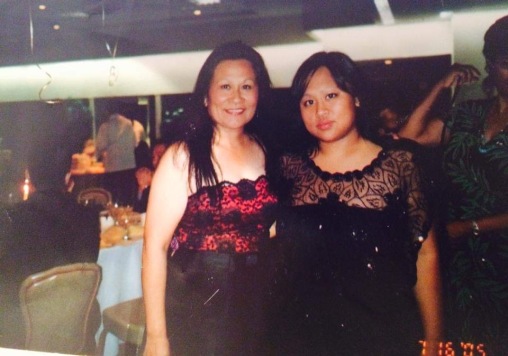

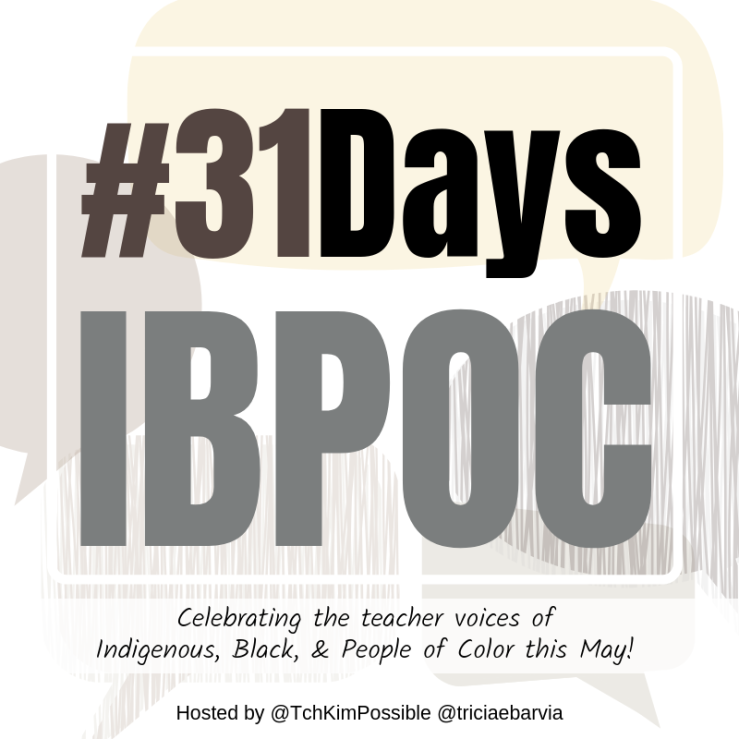

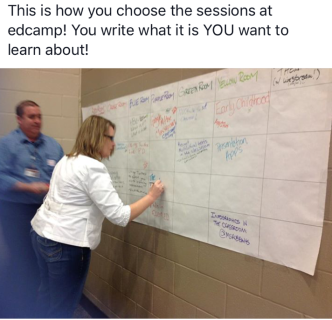




 About a million years after Scott Haselwood (
About a million years after Scott Haselwood (